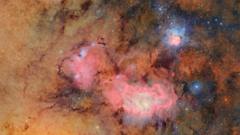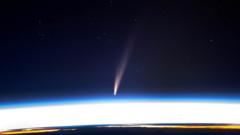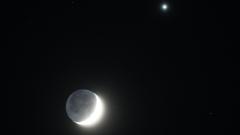As the daylight hours dwindle each year, I find myself musing about the universe and my role within it. For a fleeting moment, you are at the universe's epicenter, contemplating the enigmatic pathways of countless galaxies as they fade into the distance. There's comfort in the rhythm of celestial bodies, yet moments of astonishment and bewilderment always sneak in.
For 25 years, I have had the extraordinary opportunity to experience the breathtaking waves of amazement and fear as The New York Times’ cosmic affairs correspondent. With one of the most intriguing titles in journalism, I ventured into the depths of the Large Hadron Collider in Geneva, braved treacherous mountain peaks in Mexico, and reveled in breathtaking cosmic vistas high in Chile and Hawaii. I shared insights about Einstein with eager audiences in Hong Kong and Berlin, and walked through the remnants of the World Trade Center searching for answers after the tragic events of September 11.
As I approach retirement, I relinquish that coveted title but hold on to the essence of the role. I will occasionally contribute to these pages and embark on a new project, aspiring to weave together personal narratives and cosmic connections in a book.
Over these years, I have witnessed remarkable strides in science and history. We listened to the symphony of black holes colliding, rippling through the fabric of spacetime, and glimpsed their ghostly presence emerging from galaxies—mysterious gateways toward the cosmos' final moments. The groundbreaking discovery of the Higgs boson, after extensive investment and relentless research, was a pivotal moment for physicists attempting to decode nature’s most fundamental theories.
Moreover, the astronomical community unearthed a staggering number of potentially habitable exoplanets, yet they grapple with the realization that an astonishing 95 percent of the universe comprises elusive dark matter and dark energy, components of our cosmos that remain shrouded in mystery.
In 2015, the first whispers of gravitational waves reached my ears—claims that the LIGO observatories had detected cosmic shudders caused by colliding black holes. Skepticism clouded my opinion then; I doubted the ambitious venture would deliver concrete results. Yet, as events unfolded, my understanding of the universe expanded in ways I never imagined possible.
For 25 years, I have had the extraordinary opportunity to experience the breathtaking waves of amazement and fear as The New York Times’ cosmic affairs correspondent. With one of the most intriguing titles in journalism, I ventured into the depths of the Large Hadron Collider in Geneva, braved treacherous mountain peaks in Mexico, and reveled in breathtaking cosmic vistas high in Chile and Hawaii. I shared insights about Einstein with eager audiences in Hong Kong and Berlin, and walked through the remnants of the World Trade Center searching for answers after the tragic events of September 11.
As I approach retirement, I relinquish that coveted title but hold on to the essence of the role. I will occasionally contribute to these pages and embark on a new project, aspiring to weave together personal narratives and cosmic connections in a book.
Over these years, I have witnessed remarkable strides in science and history. We listened to the symphony of black holes colliding, rippling through the fabric of spacetime, and glimpsed their ghostly presence emerging from galaxies—mysterious gateways toward the cosmos' final moments. The groundbreaking discovery of the Higgs boson, after extensive investment and relentless research, was a pivotal moment for physicists attempting to decode nature’s most fundamental theories.
Moreover, the astronomical community unearthed a staggering number of potentially habitable exoplanets, yet they grapple with the realization that an astonishing 95 percent of the universe comprises elusive dark matter and dark energy, components of our cosmos that remain shrouded in mystery.
In 2015, the first whispers of gravitational waves reached my ears—claims that the LIGO observatories had detected cosmic shudders caused by colliding black holes. Skepticism clouded my opinion then; I doubted the ambitious venture would deliver concrete results. Yet, as events unfolded, my understanding of the universe expanded in ways I never imagined possible.










